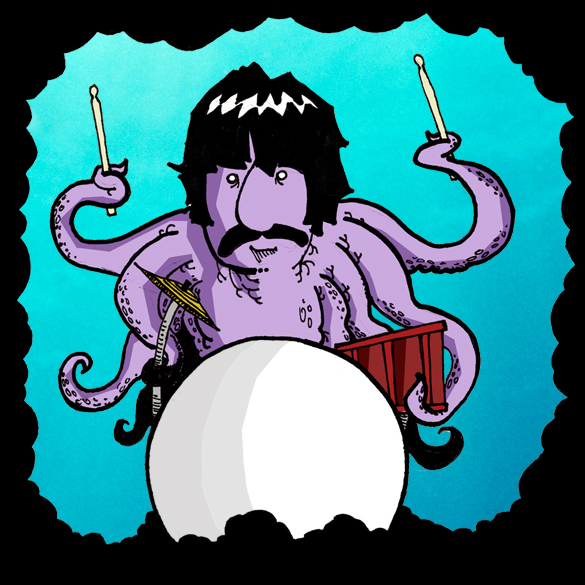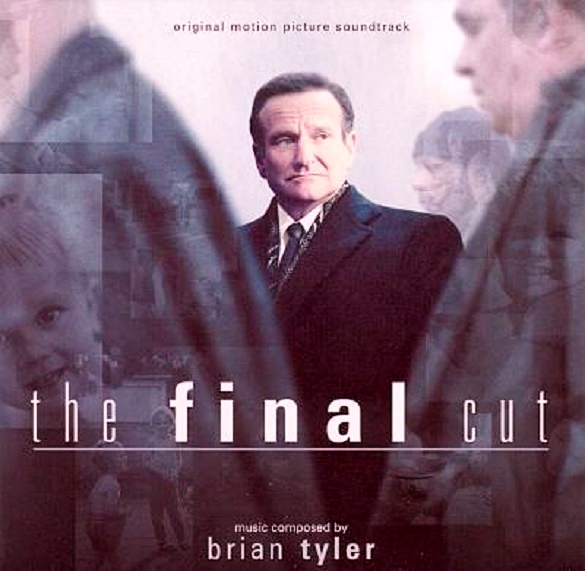“You’re the greatest drummer in the world. Really.”—Paul McCartney, the day after the band’s infamous rooftop concert at Apple Studios (January 3, 1969)
“Starr’s legacy is clouded by misconception and ignorance. Some say he was the luckiest guy on earth, a competent player who stepped into a million-dollar quartet. Why the bum rap? Was it because he didn’t overplay and shunned solos? Or was it his unassuming, Everyman countenance?”— Dennis Diken, drummer for The Smithereens (2009)
It may have been a simple twist of fate that gave us Ringo Starr, arguably the most influential rock drummer of all time. Or perhaps it was always meant to be. Either way, we almost didn’t have Richard Starkey (aka Ringo Starr) with us.
At the age of six, little Ritchie fell into a coma as a result of complications from appendicitis. A slow recovery kept him in the hospital for an extended stay. Hoping to help him stave off boredom, his parents bought him a couple of toys—a small red bus and a drum. Enamored with the drum, Starkey gave the toy bus to a sick boy sharing his hospital room. Still, it would be roughly 11 years before the young Liverpudlian got his first real set of drums, a gift from his stepfather in December 1957. And it would be another three years before Richard Starkey became Ringo Starr, the drummer for the band Rory Storm and the Hurricanes.
Meanwhile, John Lennon, Paul McCartney and George Harrison were finally beginning to gel as a musical group after several years of continuing engagements in Hamburg, Germany. Night after night, the Beatles, accompanied by Pete Best on drums, hammered out songs on stage for hours at a time. In this way, the Beatles sound, as we now know it, was born.
As another singular twist of fate would have it, Ringo, a star in his own right by then, was also playing in Hamburg with Rory Storm and the Hurricanes, where his drum solo was billed as “Starr” time. That’s where Ringo got to know the Beatles. Sitting in a few times on the drums, Ringo—age 22, the oldest of the Beatles—became chummy with John, Paul and George. Having grown tired of the moody Pete Best, the Beatles asked Ringo to join the group, which he did 50 years ago on August 18, 1962. And the foursome that would change popular music forever was set.
So what did Ringo add to the Beatles? Penning only a few compositions, it clearly wasn’t his songwriting talent. As notable as “Octopus’ Garden” and “Don’t Pass Me By” are, they certainly couldn’t match the talents of Lennon, McCartney and Harrison. Even with Lennon and McCartney composing some of their best-known Beatle songs such as “Yellow Submarine” and “With a Little Help from My Friends” for Ringo to sing, deliberately written so he wouldn’t have to reach any high notes, it wasn’t Ringo’s singing talent that made him the key ingredient in the Beatles.
With Lennon, McCartney and Harrison’s mercurial egos to contend with, Ringo was the emotional glue that held the Beatles together. Like a rock, Ringo anchored the group (the exception being his own emotional meltdown during the recording of the White Album in 1968). This was epitomized in the fact that Ringo, who developed into a fine actor, was the center figure in all three of the Beatles films—especially in Help (1965) and Yellow Submarine (1968). Apparently, Ringo being front and center didn’t threaten the Lennon-McCartney-Harrison trio. Indeed, although he was the first drummer to be elevated on stage, privately and otherwise, Ringo appeared to be egoless, simply going along with what the other three wanted to do.
Rhythmically, Ringo helped transform the Beatles into modern-day legends. In fact, the Smithereens’ Dennis Diken praises Ringo’s “style” or “feel” as the essence of what made the Beatles great. This is due, in part, to Ringo’s steady drumsticks. He was never offbeat. The band only had to stop recording sessions because of a mistake Ringo made a handful of times. A steady rhythm is the heartbeat of any piece of music, and without a competent drummer, the Beatles’ tracks would have unraveled.
Moreover, Ringo was often asked to do the impossible. Imagine having to play drums on Lennon’s “Tomorrow Never Knows” or “I Am the Walrus.” Or the amazing collage of tunes on the Sgt. Pepper’s Lonely Hearts Club Band album. In fact, in 1968, producer George Martin praised Starr’s drumming on Sgt. Pepper’s. Ringo, Martin said at the time, was “probably the finest rock drummer in the world.” Even after the Beatles broke up, Ringo continued to provide his strong drum beat for the various solo albums. For example, Ringo played on Harrison’s monumental All Things Must Pass (1970) album and Lennon’s remarkable Plastic Ono Band (1970).
Beyond the basics of drumming, Ringo played unique fills. In these, rather than through solos, he showcased his skill—a skill about which he is remarkably modest. “Whenever I hear another drummer I know I’m no good. I’m no good on technical things,” Ringo admitted. “I’m your basic offbeat drummer with funny fills. The fills were funny because I’m really left-handed playing a right-handed drum kit. I can’t roll around the drums because of that.”
Indeed, Starr’s placement of drum fills set him apart from other musicians. Where other bands would place guitar riffs, the Beatles allowed Ringo to play. This choice altered the purpose of the drum in their songs, giving Ringo the opportunity to play melody and be creative where he would normally be restricted to rhythm. Within the fills, Ringo adopted two innovative rhythmic techniques. The first, termed “The Ringo Shuffle” is a type of snare roll, that falls somewhere between 8th and 16th notes. Heard on virtually the entire White Album, the shuffle lends a danceable tempo and addictive partitioning to the Beatles’ upbeat tracks. Ringo’s second innovation was not by his own design. As he himself recognized, Ringo was a left-handed drummer playing on a right-handed set. Thus, all his fills begin with his left hand, rather than the typical right-handed start. This technique turns traditional drumming on its head, putting cymbal beats and snares where they normally would not be, producing the different “feel” of rhythm so many recognize in Ringo’s playing.
Beyond the music, Ringo also contributed to the Beatles’ lyrics. Although he authored few songs, Ringo became famous among his band mates for his sometimes silly, but often lyrical malapropisms. Phrases like “a hard day’s night,” “tomorrow never knows” and others were born on Ringo’s lips and served as inspiration for wordsmiths McCartney and Lennon. “Ringo would do these little malapropisms, he would say things slightly wrong, like people do, but his were always wonderful, very lyrical,” McCartney once said. “They were sort of magic.” Thus, Starr was obviously more than a proficient drummer for the Beatles. His musical eccentricities gave the group much of its hard-to-articulate aura that entices listeners to this day.
The overall effect of Ringo’s work as a musician thus goes far beyond the technical. As drummer Steve Smith of Journey recognizes:
Before Ringo, drum stars were measured by their soloing ability and virtuosity. Ringo’s popularity brought forth a new paradigm in how the public saw drummers. We started to see the drummer as an equal participant in the compositional aspect. One of Ringo’s great qualities was that he composed unique, stylistic drum parts for the Beatles’ songs. His parts are so signature to the songs that you can listen to a Ringo drum part without the rest of the music and still identify the song.
Though it was true that Starr did not draw attention to himself with dazzling technique on the drums, his influence on the Beatles has garnered respect from many drummers over the last forty years. Genesis’s Phil Collins has remarked that Starr is “vastly underrated.” Max Weinberg, notable for his work with Bruce Springsteen’s E Street Band and for Conan O’Brian’s late night shows, wrote in his book, The Big Beat: Conversations with Rock’s Greatest Drummers (1984), “From his matched grip style to his pioneering use of staggered tom-tom fills, his influence in rock drumming was as important and wide spread as Gene Krupa’s had been in jazz. More than any other drummer, Ringo Starr changed my life.” The Big Beat also featured an interview with D.J. Fontana, who played for Elvis Presley, wherein he commented, “I was playing maracas or something behind him, just listening to him. I swear he never varied the tempo. He played that back beat and never got off it. Man, you couldn’t have moved him with a crane. It was amazing. He played a hell of a back beat.”



